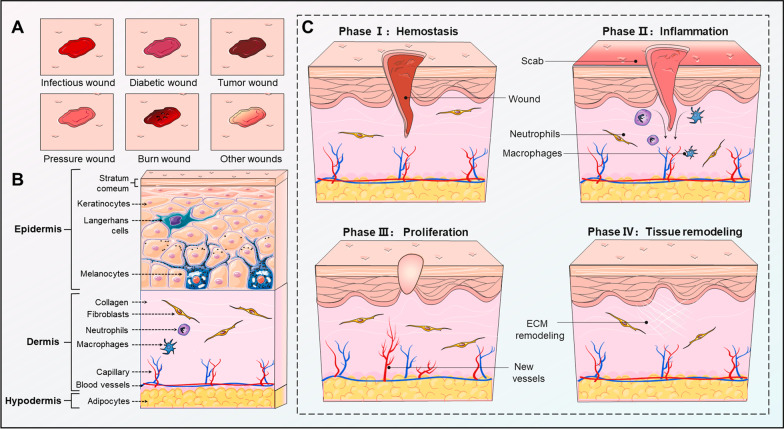Fig. 1.
Wound types, skin structure, and wound healing phases. a Different wound types, mainly including infectious, diabetic, tumor, pressure, burn, and other wounds, such as trauma, radiation, drug-induced, ischemia and venous congestion wounds. b The skin structure consists of three layers, the epidermis, dermis, and hypodermis. The epidermis is primarily composed of keratinocytes, melanocytes, and Langerhans cells, contributing to a natural barrier against foreign objects. The dermis is a region rich in fibroblasts and immune cells, as well as collagen fibers, elastic fibers, reticular fibers, nerve endings, and capillaries, for maintaining the density and tightness of skin structure. The underlying hypodermis consists of adipocytes and connective tissue, which is conducive to warmth, cushioning, and reduction of mechanical stress. c The phase of wound healing is temporally overlapping and interdependent, including hemostasis, inflammation, proliferation, and tissue remodeling. Fibroblasts, keratinocytes, and immune cells are important skin cells in wound healing phases. In this figure was partly generated using Servier Medical Art (https://smart.servier.com), provided by Servier, licensed under a Creative Commons Attribution 3.0 unported license (https://creativecommons.org/licenses/by/3.0/)

